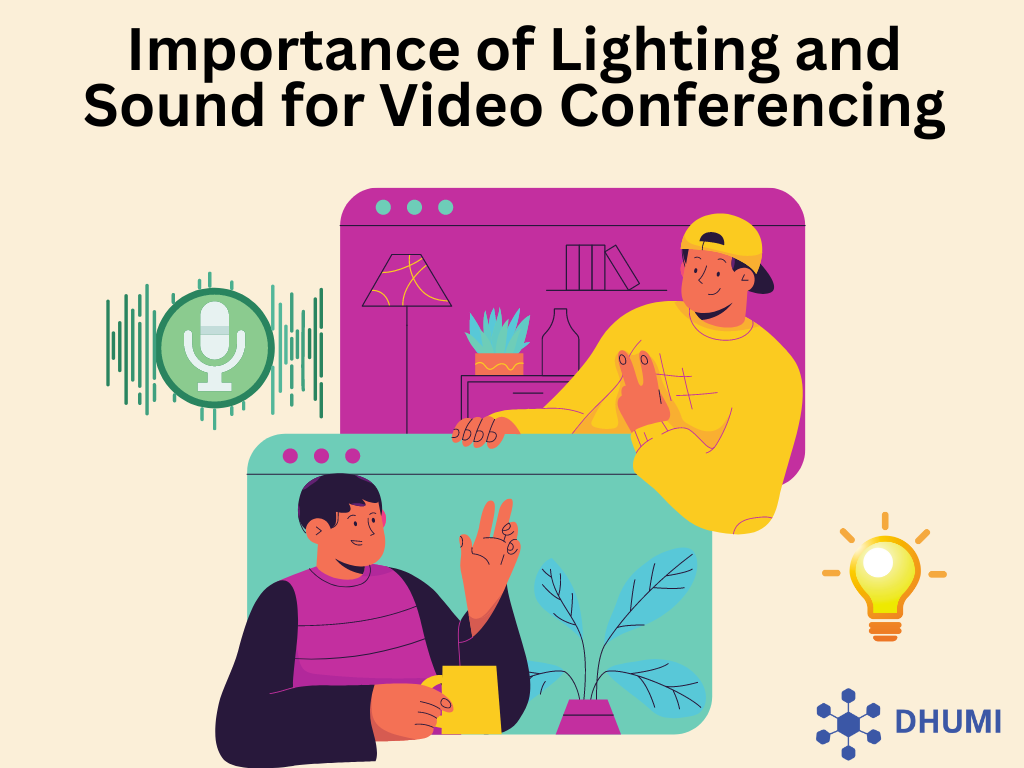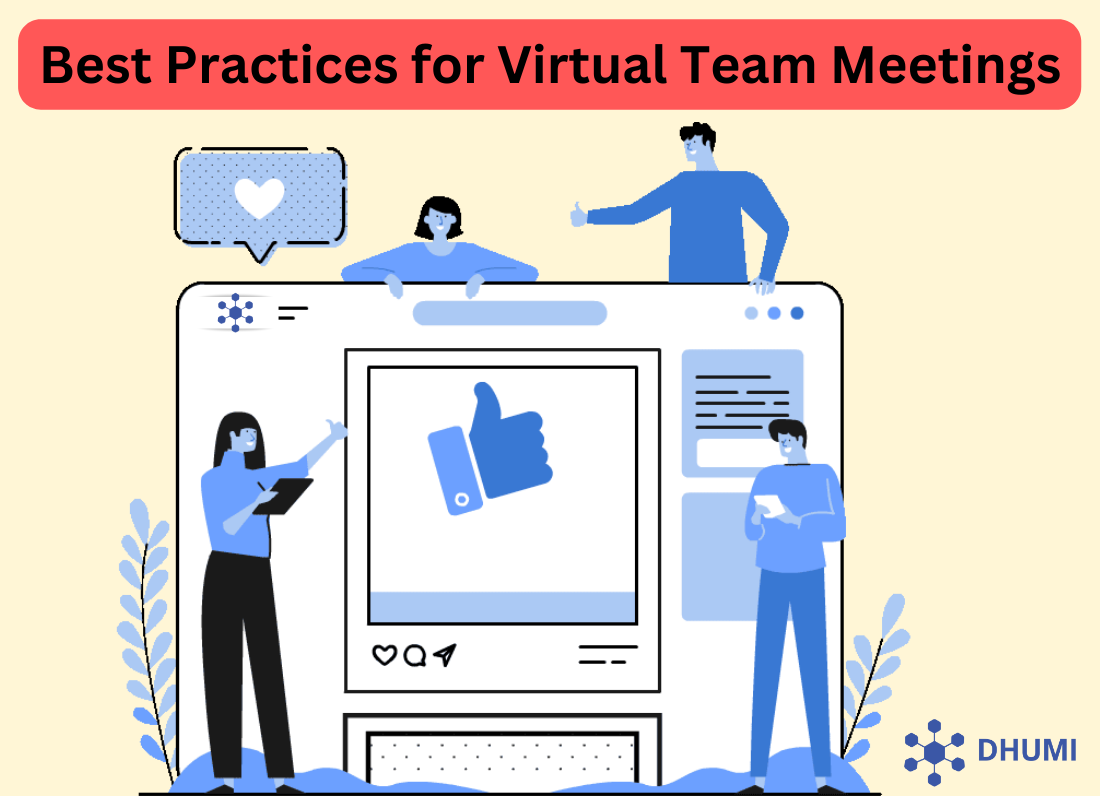
The Importance of Lighting and Sound for Video Conferencing
Many businesses rely on video conferencing to stay connected as they rapidly shift to remote workforce. While technology is required to keep the connection going, the quality of the video conference should also be addressed.
Pay great attention to lighting and sound since they are key components in generating a professional and successful video conferencing experience.
In this blog post, we'll discuss the importance of lighting and sound in video conferencing, as well as how to make a video conference successful.
The Best Lighting for Video Conferencing
Lighting is critical to the effectiveness of video conferencing. Natural light is the finest choice since it is the most flattering and may contribute to the creation of a natural-looking atmosphere.
Diffused illumination, such as lamps with shades, may contribute to a more professional appearance. It is critical to avoid intense or bright lighting, since this might be distracting and cause the other person to squint.
If natural light is not available, you may change the light to meet your requirements by employing adjustable colour temperature lighting. Make sure the light is coming from the front or side of the speaker, not from behind, as this will produce an unpleasant silhouette effect.
Furthermore, fluorescent lights should be avoided since they produce harsh light and emit an artificial tone.
Sound is also a key aspect in video conferencing performance. Background noise may be distracting and make hearing the person speaking difficult. When feasible, pick a calm area with less background noise.
If this is not an option, utilising a headset or headphones may assist to reduce noise and improve sound clarity. Check your microphone as well to confirm that sound is being transferred clearly. Video may be enhanced by maintaining proper lighting and sound quality.
What Is the Best Lighting for Video Conferencing?
•Because background noise may be distracting during video conferencing, it is crucial to locate a quiet area to avoid disrupting talks.
•Using headphones with a built-in microphone may assist in reducing background noise and producing a more professional sound.
Good lighting and acoustics are required for effective video conferencing. Natural light is the greatest choice since it illuminates the face more evenly and avoids harsh shadows.
If natural light is not available, a soft box light is a good alternative since it produces more constant illumination. It is critical to utilise an adjustable stand to ensure that the light is properly positioned and at the proper angle to give uniform illumination.
It is also critical to avoid directing the light directly at the face, which may result in an unattractive glare. If your video conferencing location has several windows, employing curtains or shades may assist to filter natural light and produce more balanced illumination.
Sound, in addition to appropriate lighting, is essential for effective video conferencing. Background noise may be distracting, so locate a quiet place to guarantee that talks are not interrupted.
Using headphones with a built-in microphone may assist in reducing background noise and producing a more professional voice. By taking the time to configure your
Where Should the Light Be for a Video Call?
Good lighting and acoustics are required for effective video conferencing. Without it, video quality may be degraded, audio may be muffled, and the whole video call experience may be unpleasant. It is essential to correctly set up the lighting and sound for your video conference in order for it to go smoothly and quickly.
When it comes to lighting, the most essential thing to remember is to put the light source in front of you rather than behind you. Natural light from a window is good, but avoid casting shadows on your face.
Use extra illumination, such as a desk lamp or ring light, if feasible, to ensure equal lighting. Avoid having strong light sources immediately behind you, such as a window, since this may produce a silhouette effect and make it difficult for others on the other end to see you clearly. Finally, bear in mind that the light should be gentle and diffused rather than harsh and direct.
A strong audio quality is also required for effective video conferencing. To do this, utilise a high-quality headset and keep the microphone near to your lips. Furthermore, avoid placing the microphone too near to a noise source, such as an air conditioner or a fan.
Avoid Backlighting
Lighting and sound are critical components of video conferencing. Poor lighting may make identifying facial features and emotions difficult, as well as create significant eye strain and headaches for viewers. Backlighting, or placing the light source behind the person on camera, may cause them to be underexposed, the backdrop to be overexposed, and the person on camera to seem washed out.
To prevent this, ensure that the light source is directly in front of the person on camera and that the brightness is uniformly spread. Use a light diffuser to soften the light and ensure that the backdrop is not too bright.
Sound quality is also critical for effective video conferencing. Poor audio might make it difficult to comprehend or hear what the other person is saying, lowering the conversation's quality.
Use a microphone that can take up sound from all directions, as well as headphones to decrease background noise and echo. Additionally, verify the audio quality before beginning the video conference to confirm that it is enough.
Video conferencing may be made considerably more successful and interesting by providing optimal lighting and sound quality. Taking the effort to get the lighting and sound just perfect can make or break a project.
Place the brightest source of light in front of you—or at a 45-degree angle.
The value of video conferencing lighting and acoustics cannot be emphasised. Having the appropriate lighting is essential for achieving the most natural appearance on camera while also avoiding eye strain.
To prevent shadows, the strongest light source should be directly in front of you or at a 45-degree angle. Furthermore, good sound arrangement is required so that everyone on the call may be heard well.
Investing in the proper lighting and sound setup for video conversations can benefit everyone involved. It is important to pay attention to these aspects in order to appear and sound your best during video conference calls, as this will make them more productive and entertaining.
Investing in the necessary equipment and taking the time to properly calibrate it will assure the success of your video calls.
Take Caution When Using Overhead Lighting
Proper lighting and acoustics are critical components for a successful video conference meeting. Overhead illumination may have a negative impact on video conferencing, causing shadows and bright spots on the participants' faces.
Diffused lighting sources, such as lamps or soft boxes, should be employed to soften the harshness of overhead lighting. Furthermore, natural illumination from a window or door should be used wherever feasible to lessen the brightness of the overhead lights.
It is critical to match the lighting to the surroundings and to alter the brightness properly. It is best to use a dimmer switch to adjust the brightness of the overhead lights if at all feasible.
When it comes to video conferencing, sound is also a significant consideration. Background noise should be kept to a minimum, and all participants should be cognizant of their speaking level. Additionally, if feasible, employing a microphone and headset combination might assist to improve video conferencing sound quality.
Finally, when it comes to video conferencing, it is critical to consider both lighting and acoustics. Diffused lighting sources, natural lighting, and a dimmer switch are all excellent methods to enhance video conference illumination. Furthermore, limiting background noise and using a microphone and headset system may aid in ensuring
1. What are the best types of lighting and sound equipment for video conferencing?
Lighting and sound are crucial aspects of video conferencing since they may contribute to a more effective and professional experience. Good lighting and acoustics may help people feel more connected and involved, as well as making what is being said easier to hear.
Lighting should be bright enough to allow all participants to be seen clearly, and sound should be loud enough for everyone to hear each other. From modest home setups to professional conference rooms, lighting and sound equipment is widely accessible. The optimum lighting and sound equipment for video conferencing is determined by the size and purpose of the meeting, as well as the budget.
LED lights and simple microphones are generally suitable for modest setups, however bigger conferences may need more complicated lighting and sound systems. Whatever the size of the conference, it is critical to have high-quality lighting and sound equipment to guarantee that everyone can be seen and heard well.
2. How Can I Ensure the Highest Quality of My Video Conference Setup?
A great video conference must have both lighting and sound. Lighting contributes to the creation of a welcoming and professional environment. It should be light enough to clearly reveal the faces of the participants, but not so bright that it generates glare.
Sound is also crucial since it ensures that everyone can hear one other well. A high-quality microphone will pick up everyone's voices clearly, while speakers will guarantee that everyone can hear the chat. Setting up a professional audio and video setup is critical to ensuring the greatest quality video conferencing.
Purchasing a high-quality camera, microphone, and speakers will assist to guarantee that your video conference operates smoothly and that everyone can clearly hear and see each other.
3. What are the Most Important Factors to Consider When Setting Up Lighting and Sound for Video Conferencing?
When planning a good video conference, lighting and sound are two critical aspects to consider. Poor lighting and acoustics might cause participants to get frustrated and confused during the meeting by making it harder for them to see and comprehend what is being discussed.
As a result, it is critical to guarantee that the lighting is bright and clear, and that the sound is of good quality. The lighting should be adequate for the size of the space and the number of attendees.
The microphone should be near to the speaker, and the speakers should be at a comfortable distance away from the camera. It is also critical to ensure that the backdrop is clear of distractions and that the space is well illuminated.
Video conferencing, with the proper lighting and sound equipment, can be an effective and efficient tool for both professional and personal gatherings.
4. What are the Potential Consequences of Poor Video Conferencing Lighting and Sound Quality?
Video conferencing relies heavily on lighting and acoustics. It is impossible for people to see and hear one another without good lighting and acoustics, making communication difficult. Poor lighting might make it difficult to see what someone is saying and hence follow their conversation.
Poor sound quality might make it difficult to comprehend what someone is saying. Poor lighting and sound quality may also make individuals look unprofessional, making it more difficult to impress prospective clients or business partners.
There are various possible issues related with poor lighting and sound quality in video conferencing. People may be unable to hear or comprehend one another, which may result in uncomfortable pauses and uncertainty.
Poor lighting may make it difficult to view someone's facial expressions correctly, making it harder to evaluate their emotions. Poor sound quality might make comprehending someone's point or argument difficult, resulting in misunderstandings. Poor lighting and sound quality may also cause participants to feel disconnected, making it harder to develop rapport and trust.
5. What Techniques Can I Use to Improve Video Conferencing Lighting and Sound?
Lighting and acoustics are two critical components of a good video conference. A good lighting and sound system may be the difference between a successful and a catastrophic conference.
Good lighting may assist to create a more natural environment while also ensuring that everyone can be seen properly. High-quality audio may assist to decrease distracting background noise and guarantee that everyone is heard.
Using natural lighting, regulating the temperature of the space, setting up a mic and speaker system, and altering the volume and brightness using video conferencing software are all ways to maximise lighting and sound for video conferencing.
You can assure a successful event and a great experience for all attendees by taking the time to properly set up the lighting and acoustics for a video conference.



